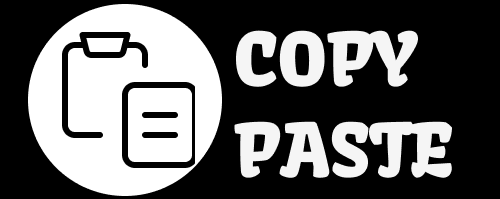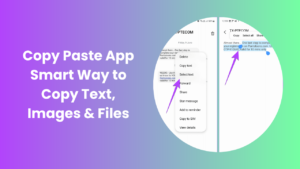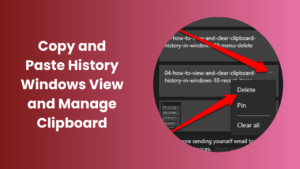The digital age has brought about a revolution in the way we create and share visual content. Businesses, creators, and everyday users are constantly seeking faster, simpler, and more effective ways to design without losing quality or originality. In this environment, copy and paste designs have emerged as an essential solution, bridging the gap between efficiency and creativity. By allowing individuals to adapt pre-made elements while still personalizing them, this approach has completely changed how design is perceived in today’s online-first culture.
Unlike earlier times when design work was exclusive to those with specialized training, the modern world has made professional visuals accessible to anyone with an internet connection. What once required expensive software and hours of effort can now be achieved in minutes through adaptable templates and resources. This accessibility has transformed design into a universal tool, empowering even small businesses or individuals to compete with larger players.
The Evolution of Digital Design
Design has always played a crucial role in communication, but its accessibility has dramatically shifted in the past two decades. Before the rise of intuitive platforms, creating professional graphics required mastery of complex tools and often years of practice. This made design an exclusive skill set, available primarily to those in specialized fields. With the expansion of digital platforms and mobile apps, however, the barrier to entry has been almost entirely removed. Today, even beginners can produce professional-level visuals that would have once required a trained designer.
This shift has also influenced how creativity is expressed. Instead of being limited to professionals, design has become a shared language across industries, education, and entertainment. The ability to adapt pre-built elements has empowered a wider audience to communicate visually without losing credibility. This cultural change highlights a new era where design is less about technical execution and more about conveying ideas effectively, quickly, and at scale.
Why Efficiency Matters in Creative Work
In a fast-paced digital environment, efficiency is just as important as innovation. Businesses cannot afford to spend weeks developing visuals for campaigns when markets shift daily, and individuals often juggle multiple responsibilities while still needing to produce high-quality content. Efficiency ensures that ideas can be brought to life within shorter timeframes, giving creators the flexibility to respond to trends and opportunities almost instantly.
Efficiency also reduces creative fatigue. Starting from scratch every time can drain energy and stifle innovation, but having adaptable resources provides a foundation for fresh ideas. Rather than replacing creativity, it gives it a starting point, enabling creators to experiment with modifications and personal touches that make the final design unique. In this way, efficiency becomes a driver of originality instead of a threat to it.
The Impact of Visual Consistency on Branding
Consistency in design is one of the most powerful tools for building a recognizable brand identity. When businesses use visuals that follow a clear style whether in color palettes, typography, or layouts they create a sense of familiarity that helps audiences connect with their message more effectively. Copying and adapting elements across multiple platforms ensures that every interaction feels cohesive and professional. This consistency does not limit creativity; instead, it strengthens recognition and trust, allowing brands to stand out in crowded digital spaces. By reusing and customizing resources thoughtfully, creators maintain both efficiency and a strong brand presence.
How Simplicity Enhances User Engagement
In today’s fast-scrolling online environment, audiences are drawn to designs that are clear, simple, and easy to understand. Overly complex visuals often distract from the intended message, while simple, well-structured layouts capture attention and improve engagement. Using adaptable design elements makes it easier to maintain this simplicity, as creators can focus on refining the message rather than struggling with technical execution. Simplicity also improves accessibility, ensuring that diverse audiences can quickly grasp information. In this way, streamlined design not only saves time for creators but also enhances the overall experience for users, strengthening the impact of every visual interaction.
Accessibility and the Democratization of Design
The democratization of design has become one of the most remarkable achievements of digital technology. Platforms offering libraries of resources, intuitive editing tools, and ready-to-use templates have removed financial and educational barriers that once excluded many people from visual creation. This shift has made it possible for freelancers, students, small businesses, and hobbyists to achieve professional results with minimal investment.
What makes this accessibility powerful is its inclusivity. People from different backgrounds and skill levels can now use visual design to express themselves. For businesses, it has leveled competition, allowing startups with limited budgets to maintain strong online presences. For individuals, it has offered the freedom to explore creativity without being restricted by lack of technical expertise. This universal access has permanently changed how we view design as a cultural and professional tool.
The Role of Copy and Paste Designs in Modern Creativity
One of the strongest examples of design accessibility and efficiency can be seen in the role of copy paste designs. Instead of beginning with a blank canvas, creators can use existing assets as a foundation, customizing them to align with specific projects. This method simplifies the creative process, allowing users to focus on storytelling and brand identity rather than technical barriers.
Far from stifling originality, this approach encourages it. The starting point may be shared, but the outcome depends on how it is adapted. By changing layouts, experimenting with color palettes, or combining multiple templates, users can produce results that are entirely unique. This method saves time while unlocking opportunities for creativity, ensuring that both professionals and beginners can create work that is effective, attractive, and aligned with their vision.
Common Misconceptions About Digital Shortcuts
Critics sometimes argue that using pre-made resources reduces originality or professionalism, but this assumption overlooks the reality of modern design. Originality does not come solely from starting from scratch but from how effectively an idea is expressed. Just as writers use a shared vocabulary to craft different stories, designers can use shared elements to create distinct visual experiences.
The professionalism of a design depends more on its execution and relevance than on whether it was built entirely from scratch. With thoughtful adaptation, even simple templates can become sophisticated and impactful. The key lies in customization—adding unique touches that transform a generic resource into a personal expression of creativity.
The Balance Between Creativity and Convenience
Balancing creativity and convenience is at the heart of digital design. Over-reliance on pre-built elements can sometimes lead to generic outcomes, but ignoring them entirely can waste valuable time. The best results occur when creators use these resources as a starting point, then enhance them with their personal style and brand identity.
This balance ensures that design remains both efficient and original. By adapting resources thoughtfully, creators can maintain artistic integrity while still meeting deadlines and addressing practical needs. The goal is not to copy without thought but to customize with intention, merging the best of convenience and creativity.
Future of Digital Design Tools
The future of design is strongly connected to artificial intelligence and automation. Tools are already available that can generate layouts, suggest styles, and adapt visuals to suit user preferences. These advancements are reducing the amount of time spent on repetitive tasks while providing users with smarter ways to create.
Despite these changes, human creativity remains irreplaceable. Machines may assist with execution, but they cannot replicate the emotional and cultural depth that human insight brings to design. The future will be less about replacing designers and more about supporting them with tools that amplify their ability to tell meaningful visual stories.
FAQs
What makes designs built from templates unique?
Even though they start with shared elements, the customization process ensures that each result is different. Personal choices in color, style, and arrangement make every project distinct.
Do businesses lose professionalism when using pre-made resources?
No, professionalism comes from how the design is executed and aligned with brand values. A well-customized template can look just as polished as a fully original piece.
How do shared resources improve efficiency?
They reduce repetitive tasks, freeing creators to focus on strategy and creativity. Instead of spending hours building basics, users can concentrate on messaging.
Are there legal risks when using pre-built design assets?
As long as they are sourced from licensed platforms, there is minimal risk. Issues arise only when copyrighted content is used without proper permission.
Can templates limit creativity?
On the contrary, they often inspire it by providing a starting point. With adjustments, creators can develop ideas that might not have emerged from a blank canvas.
Will automation replace human creativity in design?
Automation may handle technical execution, but human creativity remains essential for emotional impact. The future lies in collaboration between technology and human insight.
Why do audiences respond well to adapted designs?
Audiences value clarity and appeal more than the origin of each element. A well-executed design captures attention, regardless of whether it began with a template.
Conclusion
The world of digital design has reached a stage where accessibility, efficiency, and originality can coexist without conflict. The rise of copy and paste designs illustrates how modern tools empower creators to work faster and smarter without sacrificing personal expression. By making professional-quality visuals available to anyone, this approach has broken down traditional barriers and opened the door to a more inclusive creative culture.
For businesses, it provides a way to remain competitive and consistent without exhausting resources. For individuals, it offers an opportunity to experiment, learn, and share their vision in ways that were once impossible. What critics often dismiss as shortcuts are, in reality, methods of adaptation and customization that amplify creativity rather than diminish it.





